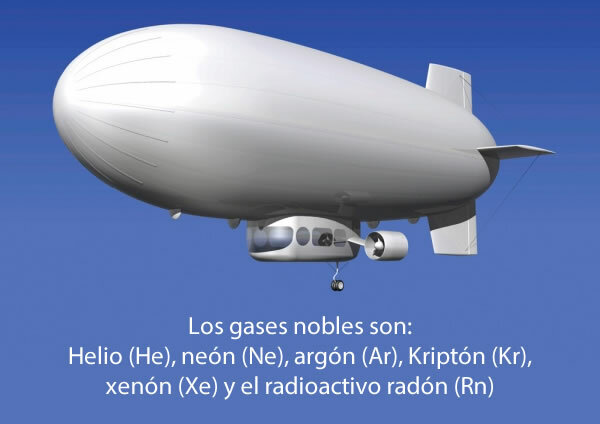Characteristics of Noble Gases
Chemistry / / July 04, 2021
They are denominated like noble gases or inert gases to a group of gases that have a low reactivity; they are named as "noble" in analogy to noble metals (gold, silver, etc.) that also have low reactivity. They are a group of chemical elements that have some similar characteristics, such as being monatomic under normal conditions, odorless, colorless and presenting low chemical reactivity. These gases are six and they are helium (He), neon (Ne), argon (Ar), Krypton (Kr), xenon (Xe) and the radioactive radon (Rn), and they are located on the extreme right of the periodic table of the elements.

Characteristics of noble gases:
They are gaseous elements. It is a set of six elements that occur in their natural state, in the form of gases.
Abundance.- Helium is one of the most abundant elements in the universe, being surpassed only by hydrogen. On the other hand, the earth is relatively rare, being only the third of the noble gases in terms of quantity in the earth's atmosphere. Other noble gases such as xenon are found in low quantities in the Earth's atmosphere, whereas gases such as radon, due to their short “duration of existence”, are scarce on the planet.
Stability.- These gases show chemical stability, which is due to the fact that they are electrically complete and therefore cannot exchange electrons; Its atomic structure has 8 electrons in its outer orbital shells, which does not allow other electrons to enter, so there are no chemical reactions with other elements. Being this quality of not reacting chemically, the reason why they are called as gases inert or noble, as mentioned above, by analogy with noble metals that are also inert. In this regard, it is noted that among the noble gases, helium does have some reactions with other elements.
They have low melting and boiling points. They are elements that under "normal" conditions (not very high or low temperatures, and normal atmospheric pressure), are presented in gaseous form. But they can be liquefied at extremely cold temperatures and solidify, except for helium, which, although it can be liquefied at very low temperatures and high pressures, cannot solidify. This is because these elements have weak molecular bonds, making their liquefaction and solidification difficult.
They have negative electronic affinity. These gases have a negative electronic affinity, this is because the gaseous elements belonging to this group cannot "Accept" an electron to form stable anions, because they are "complete" in their atomic structure, having 8 electrons in their orbits more external.
Radioactivity.- Some of them, like radon, are highly radioactive elements, since this is produced during the degradation of the element Uranium to another, Radium, having a short "life" time of just over three days, (3.82 days).
The gases that are called noble are six:
- Argon.- The Argon its symbol is (Ar) It is used inside incandescent lamps due to the quality of not reacting with the filament even at high temperatures. It is used in industry to avoid certain chemical reactions.
- Helium.- Helium whose symbol is (He) it is not flammable unlike other light gas such as Hydrogen; Quality by which it is used as a gas to fill balloons, such as hot air balloons for tourism, or airships or zeppelins.
- Neon.- The Neon whose symbol is (Ne) This gas, when stimulated by an electric current, produces light of red-orange tones, which is why it is widely used in advertising.
- Radon.- Radon gas (Rn), It is generated during the radioactive degradation of uranium to radio, having a short life, which is why it has no practical applications.
- Krypton.- Krypton, symbol (Kr), It is used in different lamps such as those of film projectors and others, as well as in some surgical lasers.
- Xenon.- Xenon gas (Xe), It is used, for example, in the flashes of photographic cameras, lasers and fluorescent tubes, thanks to its light qualities as it is pierced by electric currents.


